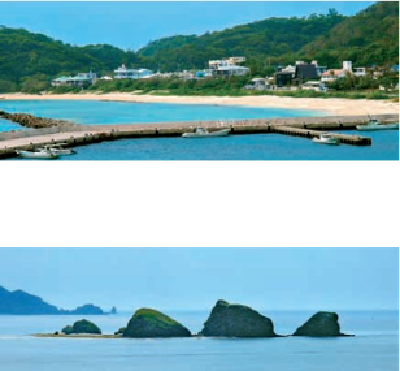Travel Reference
In-Depth Information
The white sand Maihama Beach runs along the full length in front of Aka village.
At low tide the Ijakajajima rocks are sandy patches and it's possible to walk around them.
No matter which beach you may choose, or no matter where else you may visit on the is-
land, and no matter the time of year you may come, try to get out either early in the morning
or just before sunset, for these are the times of day you are most likely to spot Kerama deer.
They're really just about everywhere on Aka, Geruma and Fukaji, but they are shy and will
bounce back into the bush the moment you come along. A bicycle is the ideal vehicle as long
as you keep quiet. They are plentiful, so you're almost guaranteed to see them. The problem is
trying to get a good photograph. They are quick and will disappear faster than you can ima-
gine.
The last features we'll mention about Aka are its immediate neighbors. Just offshore
Akajima has several interesting collections of rocks. One's to the north, another is close by
the western coast, and the last forms sort of a kite's tail due south.
IJAKAJAJIMA
(
伊釈加釈島
; Ija kaja-jima). This little boating hazard is less than three-quar-
ters of a mile (1 kilometer) northwest of Aka's northernmost beach. It's an uninhabitable col-
lection of a half dozen rocks, the largest of which is about 100 by 660 feet (200 meters). Al-
together, from end to end, the set measures around 1,640 feet (500 meters) in length and 660
feet (200 meters) wide. At low tide there are sandy patches and it's possible to walk from one

